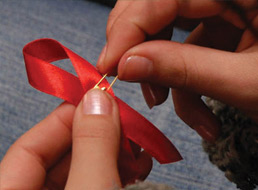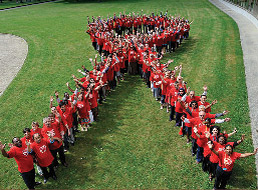Investigator How-To’s
The Women’s Interagency HIV Study (WIHS) welcomes collaborations with investigators and with other cohorts, both nationally and internationally. These joint efforts have yielded a multitude of publications of high scientific merit. The WIHS has engaged in collaborations with the HIV Epidemiology Research Study (HERS), the Women & Infants Transmission Study (WITS), the AIDS Linked to the IntraVenous Experience Study (ALIVE), the North American AIDS Cohort Collaboration on Research and Design (NA-ACCORD), and the Multicenter AIDS Cohort Study (MACS).
If you are an investigator wishing to collaborate with the WIHS, below is a step-by-step guide on how to propose a new study, request data/specimens, develop and submit a manuscript, and information on WIHS publication requirements.
- Proposing New Study/Analysis
- Requesting Data/Specimens
- Progress Reports
- Manuscript Development/Submission
- Publication
Step 1: Determine if you are an internal or external investigator
- Internal investigator: Investigator affiliated with a WIHS/MACS site
- External investigator: Investigator not affiliated with a WIHS/MACS site
Step 2: Complete the new MACS/WIHS Combined Cohort Study Concept Sheet Submission Form
Step 3: Review Completed Concept Sheet Submission Form
- Internal investigator: Review with site Principal Investigator (PI)
- External investigator: Review with WIHS/MACS liaison
- A WIHS liaison is required for all external investigators
- If you are not already working with a WIHS liaison, email JHSPH.wdmac@jhu.edu for assignment
Step 4: Submit Completed Concept Sheet Submission Form to WDMAC for Executive Committee (EC) review (JHSPH.wdmac@jhu.edu)
Step 5: EC Review
The Concept Sheet will be assigned a Principal Investigator Reviewer (PIR), as well as the following, if appropriate:
- Project Director Reviewer (PDR): If new data collection forms, specimen collection, or other elements that would increase participant or site burden are being proposed
- Lab Reviewer (LR): If collection of new specimens or withdrawal of specimens from the central repository are proposed
- Genetics Reviewer (GR): If use of DNA or genomics data is proposed
- Geocode Reviewer: If use of WIHS contextual data is proposed
Investigator should review the Instructions for Use of WIHS Contextual Dataset before submitting a concept sheet if use of WIHS contextual data is proposed.
Concept sheets are typically given a 14-day review period for all EC members with a deadline of 16 days for the PIR.
Site-specific concept sheets involving only one site do not need review by a PIR, but do require approval by the affected site’s PI. Site-specific concepts sheets will be assigned a PIR, PDR, LR, and/or GR if central WIHS resources (e.g., funding, WDMAC analysis time, etc.) are being requested.
Step 6: EC Review Outcome
- Approved as is
- Approved with comment
- Minor revisions/clarifications needed
- Major revisions/clarifications needed
- Investigator must revise and resubmit the Concept Sheet Submission Form for further review
- Rejected (e.g., overlap with other WIHS projects, lacking in scientific merit)
Step 7: Readme Number/Co-author Assignment
- Once Concept Sheet Submission Form is approved:
- WDMAC assigns a WIHS README number (used in all ensuing communication regarding the project)
- WDMAC solicits co-authors from the WIHS sites (if appropriate)
Requesting Data/Specimens
Step 8: Analytic Dataset
- If investigator is requesting an analytic dataset be prepared by WDMAC:
- Complete the new MACS/WIHS Combined Cohort Study Resource Request Form
- Form must include description of data requested and/or list of requested variables
Step 9: Repository Request
Please review the WIHS Specimen Requests and Repository Information page for detailed instructions regarding how to request specimens from the WIHS. Specimens available in the repository include plasma, serum, PBMC, cervical vaginal fluid, urine, and saliva (not all specimen types may be available at every visit).
Step 10: DNA/GWAS Request
- If investigator is requesting DNA or genomics/GWAS data:
- Complete WIHS DNA Biorepository Sample Request Form (submit to JHSPH.wdmac@jhu.edu)
- Include list of requested WIHSIDs with Form
- Complete the Genomics Data Use Agreement and submit to Bradley Aouizerat (bea4@nyu.edu) at the DNA Repository
In order to receive DNA or genomics/GWAS data, each participant must have consented “yes” to genetic studies as of their most recent WIHS visit.
*The WIHS operates under a dbGaP Alternative Sharing Plan, which permits users to request genetic and phenotypic data by the submission of a Concept Sheet that is approved by the WIHS Executive Committee. Review Step 1 above to learn how to submit and have a Concept Sheet reviewed and approved by the WIHS Executive Committee.
Progress Reports
Step 11: Annual Progress Report
- Required for every investigator with an active concept sheet
- Due by August 30th of each year
- If no Annual Progress Report is received by WDMAC, one reminder will be sent before project is deactivated
Manuscript Development/Submission
Step 12: Manuscript Development
- Once data have been analyzed and/or specimens tested:
- Investigator works with assigned co-authors to write manuscript
- Co-author approval is required prior to manuscript submission to the WIHS EC for review and approval
Step 13: Manuscript Submission
- Complete the new MACS/WIHS Combined Cohort Study Manuscript/Abstract/Publication Submission Form
- Final co-author approved manuscript must be submitted with Form
Step 14: EC Review
- Manuscript will be assigned a PIR (WIHS-wide and site-specific concept sheets)
- EC members are typically given a 14 day review period
- The deadline for the PIR is 16 days
Step 15: EC Review Outcome
- Approved
- Investigator is not required to implement suggested revisions
- Not approved
- Investigator may revise and resubmit for EC review
- Investigator may appeal to the EC if he/she does not feel a revision is warranted or does not agree with suggested revisions
Publication
Step 16: Journal Submission
- After manuscript is EC and co-author approved, investigator may submit the manuscript to a journal of his/her choosing
- Investigator must inform WDMAC of the following utilizing the WIHS Publication Submission Form:
- Date of submission to the journal
- Name of journal
- Final outcome (e.g., accepted for publication, rejected)
- Acceptance date
- Publication Date
Certain journals now require investigators to make all data described in their manuscript publicly available. Below is some suggested verbiage:
Data are from the Women’s Interagency HIV Study (WIHS), whose authors may be contacted at JHSPH.wdmac@jhu.edu. Data are available to all investigators in two ways. The WIHS Public Data Set provides de-identified data (meeting HIPAA criteria) that may assist anyone interested in public health research. Access to the WIHS Public Data Set may be obtained by filling out the WIHS Public Use Data Set Request form at wihshealth.org. Data are updated annually. Alternatively, the WIHS welcomes collaborations with investigators and with other cohorts, both nationally and internationally, who can access the entire richness of data and specimens that are available. To collaborate, a concept sheet must be submitted, reviewed, and approved by the WIHS Executive Committee. This is a requirement of cohort IRB approvals ensuring secure, timely, and ethical sharing of the cohort’s data.
Step 17: Post Publication
- Investigator must provide WDMAC with the following:
- Full final citation
- PDF version of the published paper
- Investigator must submit the manuscript to the NIHMS system for assignment of a PMCID
- Failure to submit may result in future restrictions on the use of WIHS data/specimens
- After completion of analyses defined in the WIHS Concept Sheet (i.e., dissemination of study findings in the form of a manuscript submitted to a peer-reviewed scientific journal):
- Investigator must destroy all copies of the limited dataset within 60 days
- Investigator must send copy of all primary data to WDMAC (JHSPH.wdmac@jhu.edu)
- If specimen testing, all laboratory results must be sent to WDMAC for archival purposes (JHSPH.wdmac@jhu.edu)
Step 18: WIHS Acknowledgement
All publications and presentations of studies utilizing samples and/or data supplied by the WIHS should acknowledge the contribution of samples and/or data, as well as the WIHS consortia and data center.




